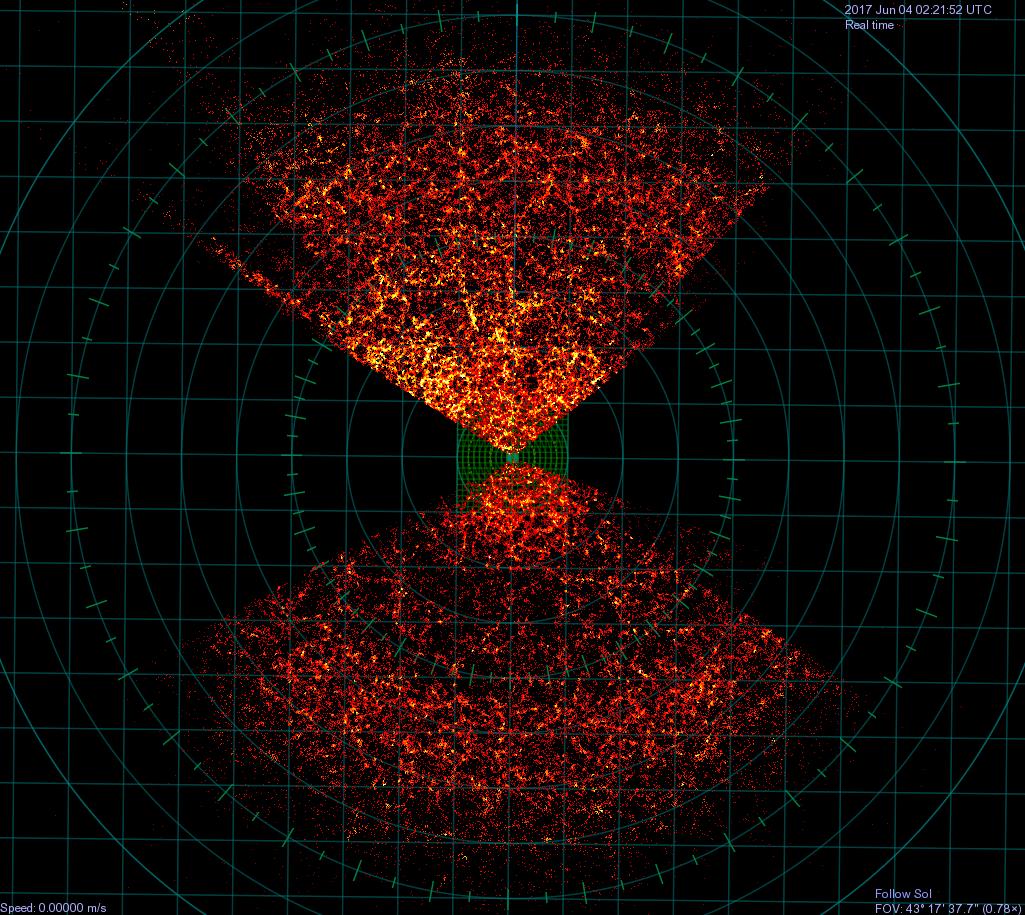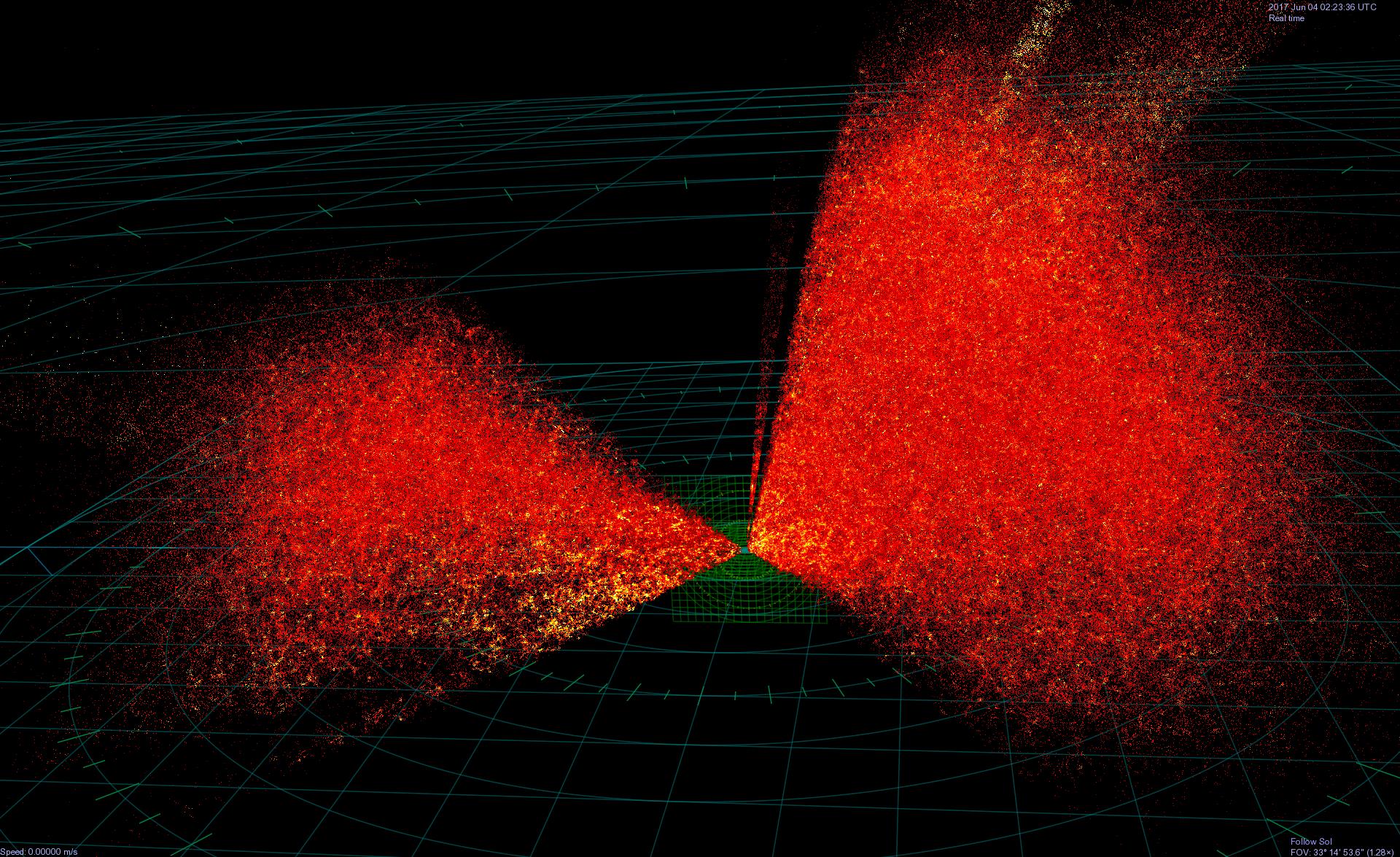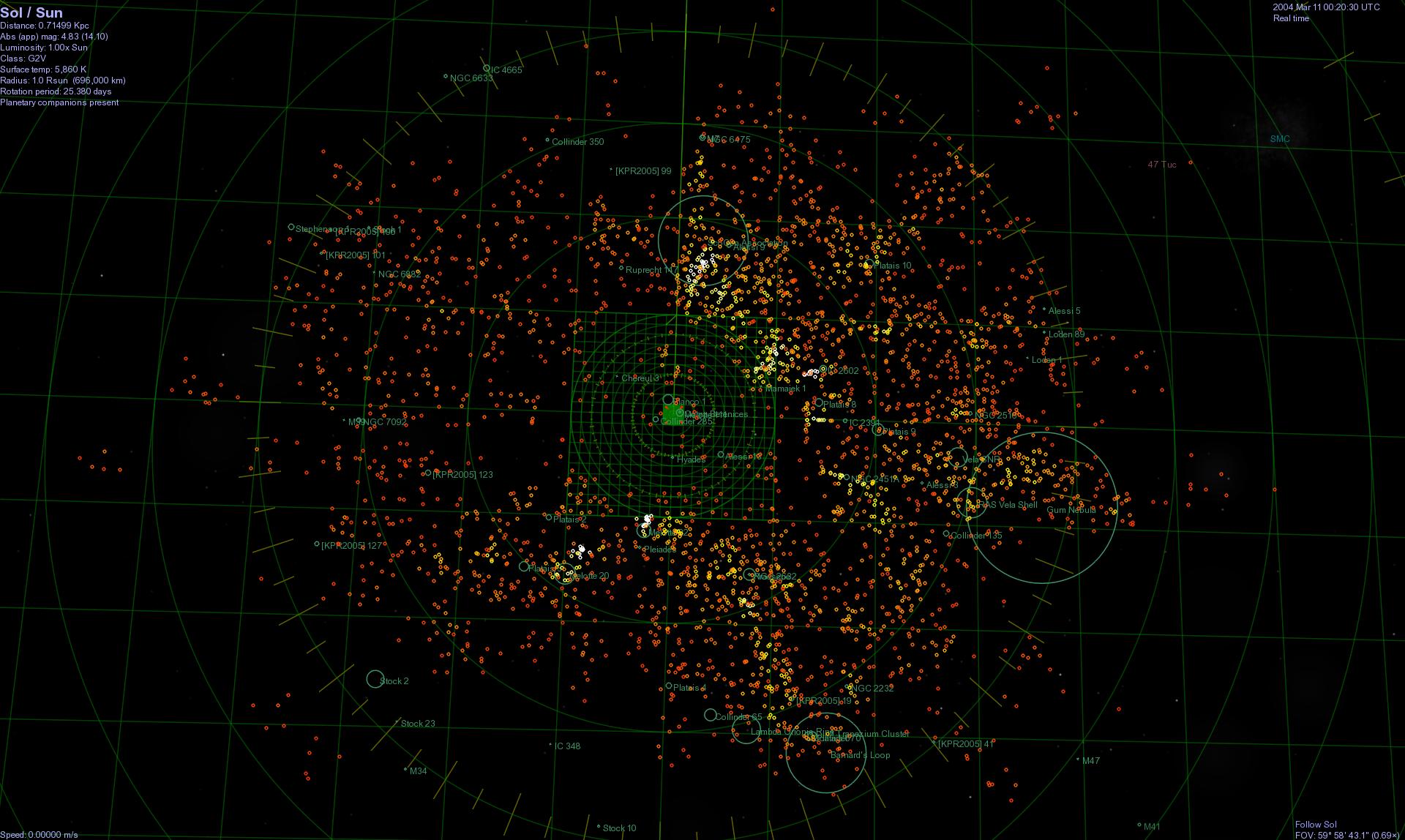Galaxies: SDSS DR13
sdss_dr13_galaxies.zip (v0.9; 30MB expands to 37MB, 06Jun17)
This Addon provides views into the distribution of galaxies in the depths of space.
Although their database of galaxies hasn't undergone significant modifications for several data releases, I extracted galaxy positions and Z values from the Sloan Digital Sky Survey's 13th Data Release to create this Celestia Addon.
This first image shows Celestia displaying an equivalent of the SDSS Orange Pie image. (The original can be seen at http://www.sdss.org/science/orangepie/) It shows the positions of about 200,000 galaxies in a relatively thin layer, with Equatorial Declinations of +/- 1.5 degrees. Each dot representing a galaxy is colored proportionally to the local density of galaxies: red for low densities, through yellow, to white for the highest density.
This second picture below shows approximately 2,000,000 galaxies. Their conical distributions are due to the limited regions of the sky in which the SDSS has done their measurements. For example, they avoid the regions of the sky obscured behind the stars and dust clouds of our own Milky Way galaxy.
These and other views are available in the Addon.
Open Clusters
gaia_clusters_v2.zip (7.9 MB, expands to 10.3 MB, 14Jun17)
This Addon for Celestia v1.6.1 displays the positions of stars which are likely to be members of various open clusters. It includes a star database derived from Gaia DR1, defining the locations of 416,945 stars with parallax errors less than 10% of their parallax values. It also includes all-sky plots showing the relative coverage of Tycho-2, TGAS and this Addon's star databases.
Bright Stars
OB_Stars.zip (404KB, expands to 2.8MB 04May17)
This Addon lets you display the density of the clouds of B stars within about 1500 LY. The colors of the marks vary from red (low density) through yellow (medium density) to white (high density).
If you squint, you can see a trail of bright marks (high star density) leading from our Sun down to the Orion Nebula, which is at the lower right. Toward the upper right you'll see vast OB Associations of young stars.



